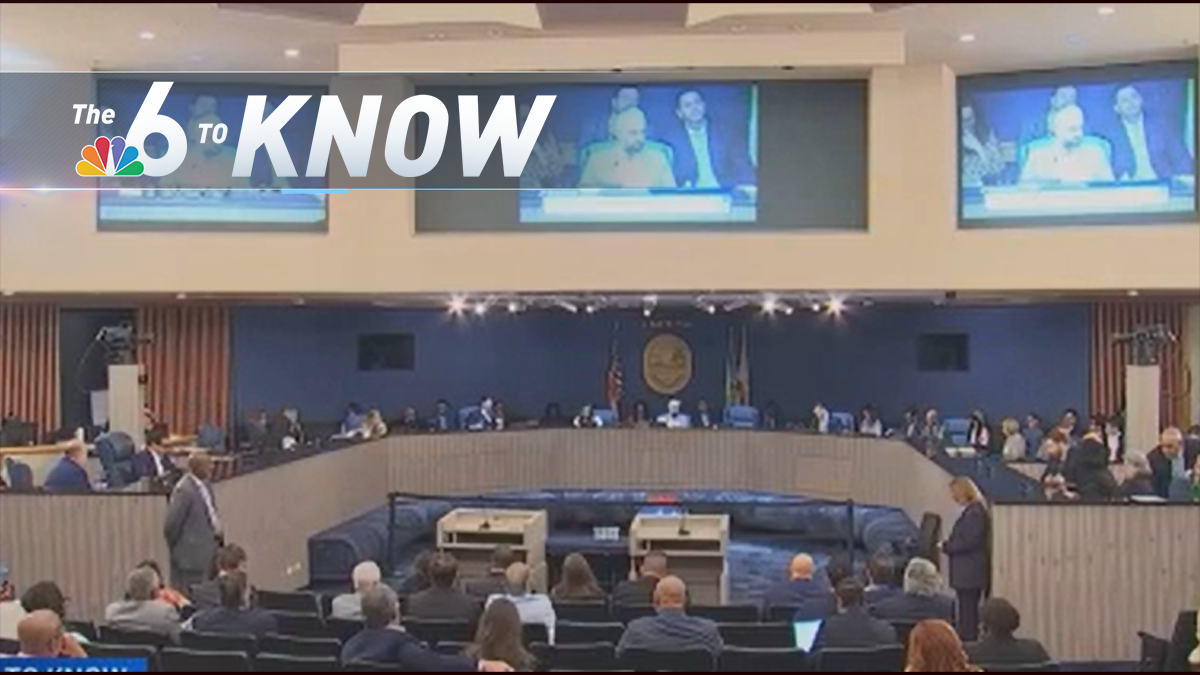One person was rescued from a vehicle in North Miami and other neighborhoods also saw severe flooding after downpours soaked the region.
How many of these are we going to get?
That’s a lot of what I’m hearing on social media platforms regarding yet another “1-in-a-really-long-time” event like we’re having this week in South Florida.
Watch NBC6 free wherever you are
Last year’s rain bomb in April in Fort Lauderdale was a 1-in-1000 year event. But that 0.1% chance per year event seems to be materializing more often than the probabilities point to.
The rainmaker this week is not a tropical system. While it has been designated Invest 90L by the National Hurricane Center, development chances are low and not expected to materialize until the disturbance is out over the Atlantic, north of the Bahamas and moving away from Florida.
Get local news you need to know to start your day with NBC 6's News Headlines newsletter.
Remarkably, parts of South Florida were in a severe drought on Monday. And yet, flooding started to materialize on Tuesday, and then became deep, damaging, and widespread on Wednesday. It could get worse Thursday and Friday.
Some, maybe many of you, realize that we’re playing with loaded dice. Climate change didn’t cause this rainstorm. But it did enhance it.
That’s how we had yet another foot of rain fall in just a few hours over South Florida communities on Wednesday. That’s on top of about a half-foot of rain that fell on Tuesday. And we could get another foot of rain by Friday or Saturday.

There is less room for rainfall runoff to be stored underground because the water table is higher, pushed up by the encroaching seas. Remember, South Florida’s substrate is made of porous limestone. Sea level rise isn’t just making the tides higher in Biscayne Bay and the Intracoastal; it’s sending seawater creeping higher and further inland subterraneously.
Local
Certainly, urban sprawl—the unbridled spread of impermeable surfaces—has contributed to this situation. And the drainage and sewer infrastructure, designed in the 20th century for a 20th century climate, can’t keep up with the rain rates we see in today’s climate.
Remember the severe heat wave we were in just before this deluge? Hotter air can hold more water vapor. When it rains, it rains harder.
And so, here we are yet again. Hundreds of cars stalled and ruined. Dozens of homes with several inches of water inside—it doesn’t take much flooding to spoil everything you own. And more pressure on a failing Florida insurance market.
It is, frankly, getting harder and harder to live in Greater Miami and Fort Lauderdale when your pocketbook gets hit again and again by more frequent short-fused extreme weather emergencies on top of the slow-motion symptoms of the changing climate, including dangerous heat and accelerating sea level rise. And I haven’t even mentioned the rapidly intensifying and stronger hurricanes of the present era.
Good forecasts about this heavy rain event were widely available since the beginning of the week. They may not have called for two feet of rain (like we’ll likely get before it’s all said and done), but they certainly pointed to a potentially dangerous rainstorm.
If you’re sticking around, like I am (for now), please stay informed and be wary of any and all forecasts for potentially extreme weather.



